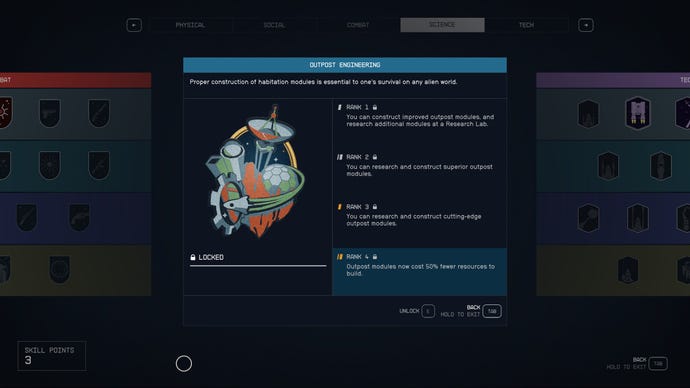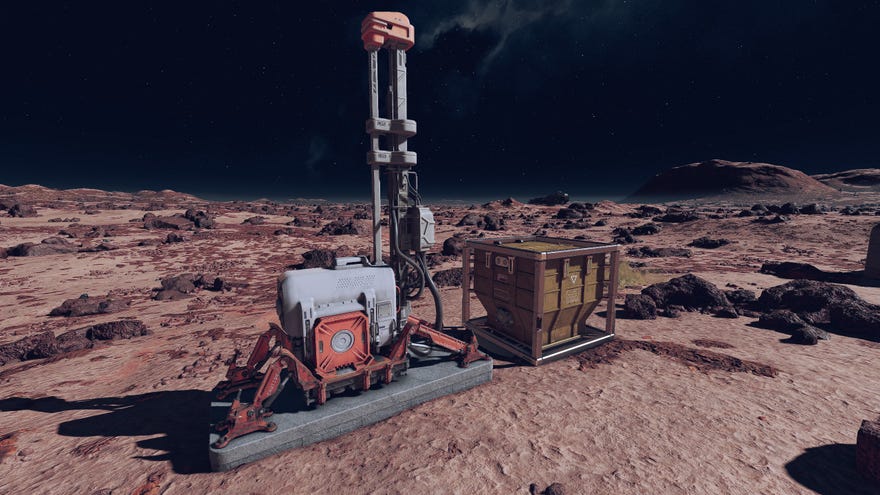Starfield outposts guide: How to build outposts
Learn how to harvest all the resources you'll ever need
How do you build Starfield outposts? First and foremost, it must be stressed that outposts in Starfield are not required to beat the game or play through the main story, or any of the many side missions and quests. Outposts are a secondary mechanic you can explore to automatically acquire resources for crafting the best mods, and act as somewhere to send many of the characters you can recruit.
Since outposts aren't tied to any specific mission however, it means there's no proper in-game tutorial. That's where we come in. We have a separate guide on how to delete an outpost if you hit the limit, so this is all about how to build outposts in Starfield and what you need to consider. So read on if you need some help getting started with your first Starfield outposts!
How to start building an outpost
The first step of building any Starfield outpost is figuring out where to build it. We have a guide on the best outpost locations in Starfield to get you started; or you can find your own perfect spot for an outpost by finding a planet and doing a planetary scan before landing so you can ensure your landing spot contains the primary resource you want.
Here's how to build an outpost in Starfield:
- Find the exact location on the planet you want to build your outpost.
- Equip your scanner and search for areas that contain the resource you're looking for.
- Place a beacon in your chosen location.
- Build an extractor on a nearby mineral, and build a power source nearby.

Congratulations! You should now be extracting that mineral, as long as your provided power is higher than your required power. It's worth noting that individual extractors cannot store much, so it is recommended that you build some storage for the harvested mineral to be kept in. For it to happen automatically, you must link the extractor to the storage in build mode.
How to build a network of outposts
Now you understand the basics of automatic resource gathering, you can build upon those foundations. Helium-3 is the resource that is used as fuel for pretty much everything in Starfield, so having at least one outpost dedicated to harvesting it is recommended. This will allow you to set up cargo links with different systems and eventually have one huge, glamorous base, with a sprawling network of smaller outposts throughout the universe, all of which have their resources automatically coming back to your main base. Here's how it works:
- Set up one outpost dedicated to mining Helium-3.
- Place a Cargo Link or Cargo Link - Intersystem at both this outpost and your other outpost.
- Use the control console to establish a link between the two outposts.

Anything producing materials that is linked to the Cargo Link will now have ships travelling to and fro, exchanging materials between the two outposts. Having a dedicated Helium-3 outpost will also allow you to place Fueled Generators, which create much more power than Solar Arrays or Wind Turbines.
From here, you're also free to start building vanity and cosmetic options for your outposts too. The one thing to bear in mind though is that for any habitats to be accessible, you must build an outpost airlock first. You don't need habitats to place workbenches or security defences, but otherwise everything will be out in the open.

How to assign crew to outposts
In order to assign your crew to outposts, you must build a Crew Station. Once you have a Crew Station, you can navigate to your list of crew members - by looking at your ship in the menu then opening crew - and assign members to outposts or your ship. Some recruitable crew members, such as Lin and Heller, are much better suited to working in outposts due to their skills.

Essential outpost skills
There are a plethora of skills that will assist in building your outpost network, and if you want to get serious about having outposts all over the galaxy, you should invest in some of these:
Outpost Management
Social Tier 3Outpost Management is pretty straightforward. Unlock the first tier and you can place additional cargo links - the default without the perk is only three - and as you rank it up, you can place additional robots and crew, followed by extractors doubling their production rate. As you may expect, that comes in handy very quickly.
Scanning
Science Tier 2When you're looking for somewhere to place an outpost, you must scan the planet first to see all the available resources. However, unless you rank up the Scanning skill, you'll only be able to see where common resources are, such as aluminum and iron. This is fine when you're just starting out, but if you want to harvest exotic and unique resources, you'd do well to max out Scanning.
Botany
Science Tier 2Located next to the Science skill, you only need the first rank of Botany for your outposts, as it lets you cultivate plants rather than having to find and harvest them in the wild. This doesn't work for all plants, but is useful for obtaining some of the common resources you usually find in flora.
Zoology
Science Tier 2Much like Botany, Zoology is the fauna variant - acquire the first rank and you can produce animal resources at your outposts. Simple, right?
Outpost Engineering
Science Tier 3Another essential one if you want to have as many outposts as possible, this one increases the type of outpost modules you can build with each rank and if you upgrade it all the way, all outpost modules cost half as many resources to build.
Planetary Habitation
Science Tier 4In the final tier of Science, Planetary Habitation is useful for two reasons. The first is that with each rank, the number of outposts you can build is increased, up to a maximum of 48. It also allows you to build outposts on planets with extreme conditions such as Deep Freeze, Inferno, toxic and corrosive atmospheres, and so on.
Special Projects
Science Tier 4You're likely going for this one if you're building outposts anyway because it allows you to create much better components and research new projects, but it directly ties to outposts if you level it up all the way. The fourth rank means outpost extractors have a chance to produce additional resources, so when combined with Outpost Management, you can get a seriously big haul from one extractor.
Now you're equipped to take on the universe and settle outposts everywhere. Before you do though, make sure you read up on our guide to the best builds in Starfield, so you know how to kit out your character. You may also find our guides on the best Starfield skills and best Starfield traits to be particularly helpful.













